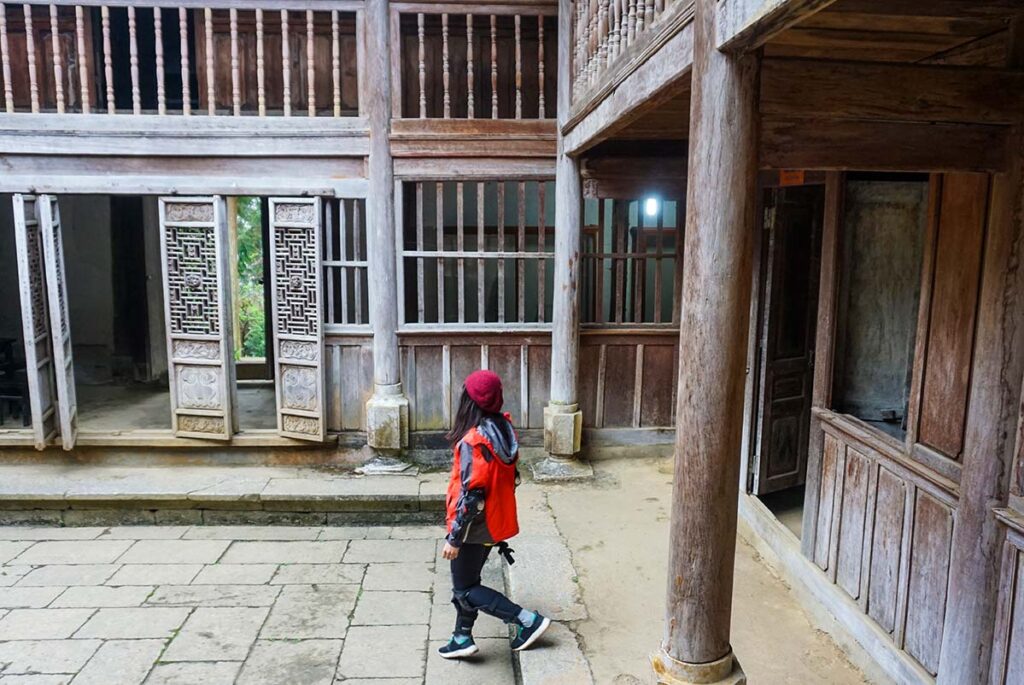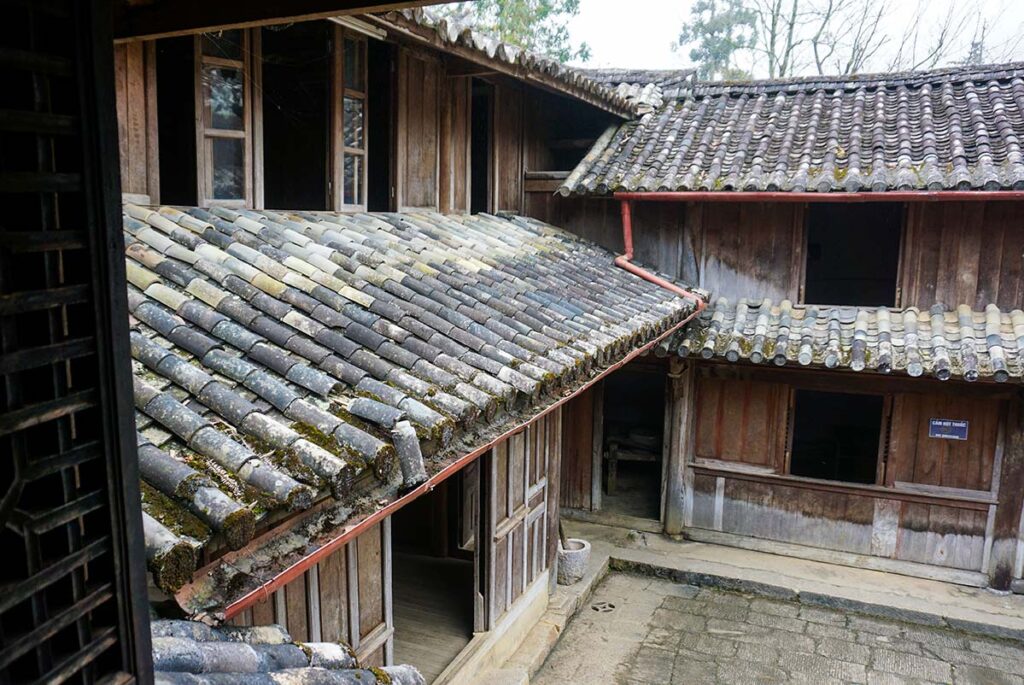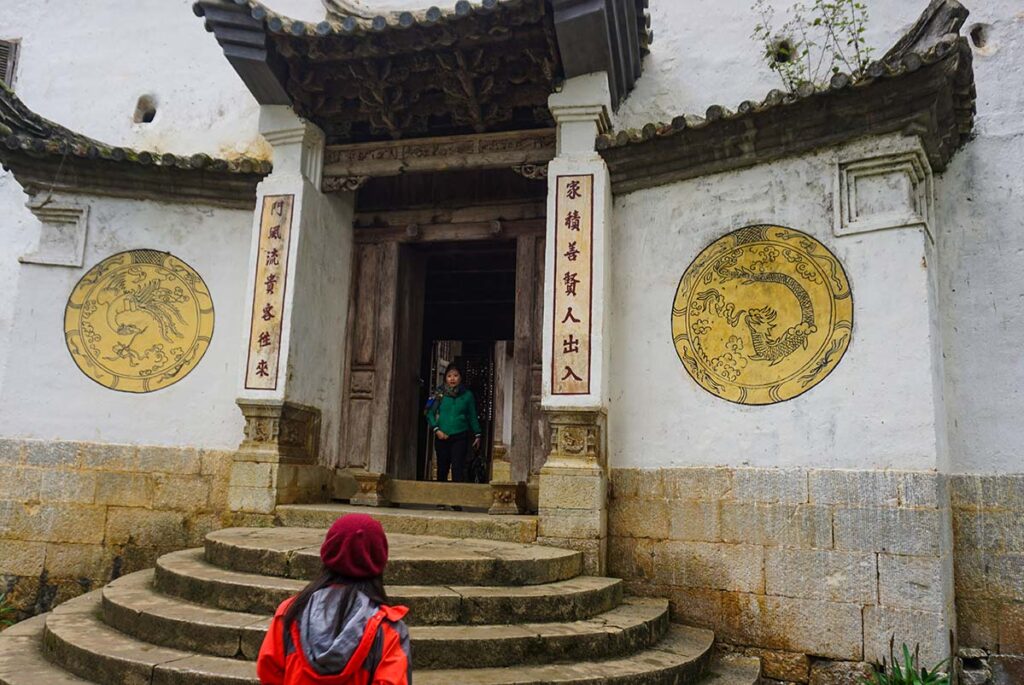History of the Hmong King Palace
Centuries ago, the Hmong people migrated from China to northern Vietnam and exerted their rule over much of Ha Giang province. Initially serving as vassals to the Nguyen kings, the Hmong later allied with the French during the colonial era, gaining recognition as rulers in the region.

In 1898, with the French rulers’ approval, Chinese traders commenced the construction of a wooden palace in Sa Phin for the Hmong kings. Vuong Chinh Sinh Palace, also known as Vua Meo (Hmong King Palace), was finished in 1902 and served as the seat of power for two Hmong rulers. Dominating the region for centuries after their migration from southern China, the first ruler aligned with the French colonial powers, while the second supported Ho Chi Minh’s fight for independence.
Thriving on trade, particularly opium, which played a significant role in the region’s commerce, the Hmong family residing in the palace achieved great prosperity and power. Their reign lasted until Vietnam’s independence in 1945, and the monarchy was eventually abolished after the passing of Thanh in 1962. Though the descendants of this family still exist, the palace remains uninhabited.
Acknowledged as a national historic relic, the palace underwent transformation into a tourist site in 1993, preserving the captivating history of the Hmong people in the area.
The layout of the palace of Hmong kings
Taking eight years to complete, the grand palace comprises 64 rooms spread across ten two-story buildings with three open courtyards.

The Hmong King Palace is ingeniously designed in the style of a traditional Chinese courtyard house, featuring four wings enveloping a central atrium. For added protection, an outer stone wall encircles the palace, serving as a defensive measure against potential attackers.

The wooden palace is built adhering to the principles of feng shui, which emphasizes the influence of the environment on well-being. Consequently, the palace showcases a fusion of Chinese architectural elements and local Hmong culture, displaying exquisite images of sacred creatures like dragons, turtles, unicorns, and phoenixes to symbolize prosperity.
Visiting information
Entrance fee
The entrance fee for the Hmong King Palace is 20,000 VND (approximately 1 USD).
Opening hours
The palace is open daily from 7:30 AM to 5:00 PM. Please note that opening hours may vary on public holidays.
Best time to visit
Weekends tend to be the busiest with many local tourists arriving in Ha Giang. For a more peaceful experience, it’s recommended to visit in the morning when it is least crowded.
Time to visit
You can expect to spend around 30 minutes exploring the palace and its surroundings.
How to get there
Location
The Hmong King Palace is situated in the Sa Phin Valley, within Dong Van District of Ha Giang province. It is approximately 14 km from Dong Van town and 130 km from Ha Giang City.
From Hanoi to Ha Giang
To reach the Hmong King Palace, your journey begins from Hanoi to Ha Giang. As there is no airport or train station in Ha Giang, your transportation options are limited to overnight sleeper buses or daytime limousine buses or cars. The travel time from Hanoi to Ha Giang is around 6 to 7 hours.
From Ha Giang City to the Hmong King Palace on the Ha Giang Loop
Upon arriving in Ha Giang, the best way to visit the Hmong King Palace is by embarking on the Ha Giang Loop. This loop encompasses a route that includes the palace and other significant highlights of Ha Giang, such as picturesque mountain passes, ethnic minority villages, and hill tribe markets.
There are three ways to explore the Ha Giang Loop:
- Drive a motorbike yourself: An adventurous option, but it is recommended only for those with a valid motorbike license and sufficient riding experience.
- Ride on the back of a motorbike: Still adventurous, but safer, as you will have a guide who will drive and show you around.
- Ha Giang Loop by car: The most comfortable option, providing a leisurely way to enjoy the scenic route.


